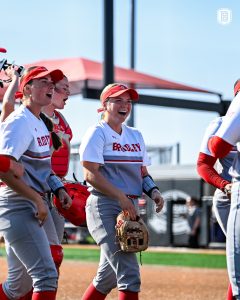
In the past 20 years, the popularity of soccer in the United States has exploded, both in viewership and attendance. However, because of the season’s length, college soccer is extremely flawed. Fixing this problem could benefit the sport in our country as a whole.
A three-time national championship-winning coach is leading the effort to change this.
For the past seven years, University of Maryland’s head soccer coach, Sasho Cirovski, has been spearheading the creation of the “21st Century Model.” The model is a plan to extend the collegiate soccer season over two semesters, while actually reducing the number of games played.
In its current format, the season consists of 25 games – seven exhibition and 18 regular-season – played over three months. In this format, the postseason is played from mid-November to early December.
The proposed plan reduces the number of games to 23 – three exhibition and 20 regular-season – played over eight months. Included in the extended season is a mandatory off-week to conclude the fall season, and a limit of eight weekly training hours from December to mid-February. The proposal schedules the postseason from late April to May.
At the moment, a 12-week season lends itself to a significant amount of midweek games. This proposed model would limit this amount to three for the whole academic year.
The NCAA was set to vote on adopting this plan this past April. However, due to the pandemic, the vote was tabled for a later date.
While some might think that extending the season would take a greater toll on the student-athletes, the opposite is actually true. An extended season benefits both the physical and mental well-being of student-athletes by lessening their workload.
This plan allows for student-athletes to have more time to be students. Fewer weekday games mean less time spent traveling to and from other schools. In theory, this gives student-athletes more time in the classroom.
Reducing the number of weekday games also allows student-athletes more time to recover in between games, which helps prevent injuries down the road.
The health aspects are the driving argument behind adopting this model and Bradley’s head coach, and the mid-major chair for Division I soccer, Jim DeRose stands behind the proposal for this reason.
“Nothing should be more important than the physical, mental and physiological wellness of student-athletes,” DeRose said.
DeRose isn’t the only coach in favor of this plan as, according to a 2016 survey conducted by the NCAA and the National Soccer Coaches Association of America, 90 percent of men’s soccer coaches support it.
The support doesn’t stop with coaches, as medical professionals agree with the plan.
Both the Soccer Athletic Trainers’ Society and the American Journal of Sports Medicine have published their support behind the proposal.
With all that said, what do the players think about it?
In 2017, the United Soccer Coaches polled about 4,800 Division I student-athletes. While only 65 percent of the Missouri Valley Conference supports it, 80 percent of all Division I soccer players support the plan.
While the health aspects of the new plan are the main reason for adopting this proposal, two other reasons deserve consideration as well. One has an instant impact, and one will change the landscape of the sport in our country in the long term.
Right now with the postseason being played in the late fall, the most important games of the season are being played in cold and wet conditions which is not ideal for soccer. Moving the postseason to the spring allows for the most important games to be played in weather better suited for soccer.
Looking at the bigger picture, extending the season better prepares players who want to play professionally, which, in turn, will make American soccer a better product.
Most leagues around the world, both professional and pre-professional, play their seasons over a longer period of time compared to college soccer. The biggest problem with college players going pro is that they eventually hit a wall since they are not used to playing seasons that last more than three months.
If the NCAA moves to this model, players will stay in shape longer and will gain experience playing longer seasons. Eventually, this will produce talent that can keep up with the pros.
The plan does of course bring up logistical challenges that individual schools may have trouble working out. Say a soccer team shares its facilities with its school’s lacrosse team, there will be scheduling issues that arise.
This drawback, however, is heavily outweighed by the benefits of the plan in the long term.
There is overwhelming evidence that the “21st Century Model” will benefit the mental and physical health of student-athletes. On top of that, the model allows for better postseason weather conditions, while also better preparing players to play professionally.
Ultimately, the NCAA needs to use the uncertainty that lies ahead as an opportunity to move into the 21st Century.




